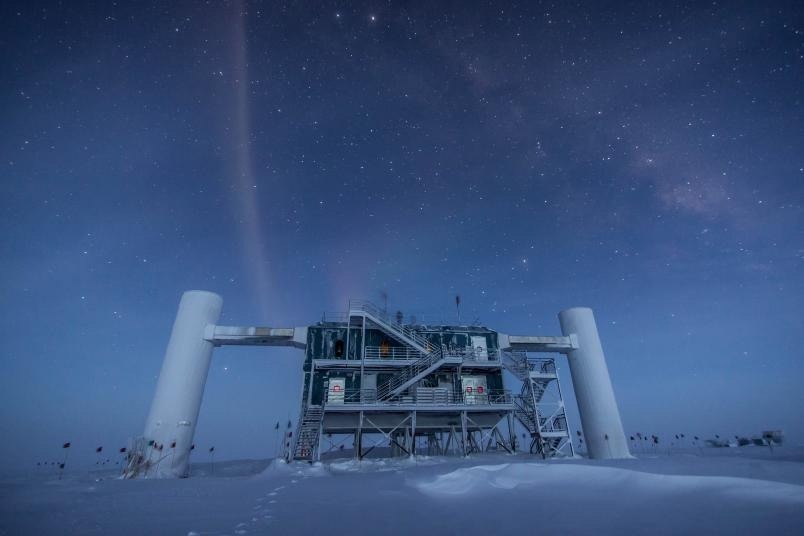Researchers at Ruhr-Universität Bochum are hoping to use neutrinos to pinpoint the sources of cosmic radiation. New algorithms developed in Bochum are aiding this search and have also helped to eliminate a few potential candidates.

The IceCube laboratory is located near the Amundsen-Scott South Pole Station in Antarctica. This is, for example, where the computers that record the data are located. Image Credit: Felipe Pedreros, IceCube/NSF
Since 2009, an international research team has been using the IceCube neutrino detector at the South Pole to search for the source of cosmic radiation. New algorithms developed by the Bochum-based group of Professor Anna Franckowiak are increasing the likelihood of a discovery.
Using these algorithms, the energy and direction of particles detected by IceCube can be calculated in real time, enabling telescopes worldwide to search for their origins. The team is also applying the algorithms to archived data and recently dismissed several potential sources of cosmic rays, according to Ruhr University Bochum’s science magazine Rubin.
The origin of cosmic radiation, which continuously bombards Earth with various particles, is currently unknown. Scientists believe neutrinos are ideal for finding the sources because, unlike other particles, they can travel over vast distances without interacting with space or matter. This allows them to follow a direct path from their source to Earth, where they can be detected by IceCube.
Quickly and Precisely Determining Neutrino Trajectories
The algorithm developed by Anna Franckowiak’s team analyzes neutrino trajectories quickly and accurately.
We need 30 seconds to calculate the energy and direction of a neutrino, and immediately disseminate the information worldwide.
Anna Franckowiak, Research Group Lead, Multi-wavelength and Multi-messenger Astronomy, Ruhr-Universität Bochum
Franckowiak is also a member of the Collaborative Research Center “Cosmic Interacting Matter,” coordinated in Bochum.
After providing an initial, instant result, the team uses a slower, more precise algorithm to refine the neutrino information. This updated process makes the trajectory calculation four to five times more precise than previous methods.
Telescopes around the world then use these refined neutrino alerts to scour the region of the sky where the particle came from. The goal is to search for any energy-rich objects that could have emitted the neutrino.
These celestial objects might only light up very briefly, so it’s crucial that our system works in real time.
Anna Franckowiak, Research Group Lead, Multi-wavelength and Multi-messenger Astronomy, Bochum
Still No Sources
After a potential source for the neutrino has been found, the calculations are resumed.
“Then we determine how likely it is that, when we look in the direction the neutrino came from, we see such a celestial object light up that has nothing to do with the neutrino,” Franckowiak explains.
The researchers had considered tidal disruption events as emitters of neutrinos.
“These occur when a star comes too close to an inactive black hole that is not swallowing up any matter, but stretches the star because of its strong gravity. The side of the star facing the black hole is pulled further than the other side, which can tear the star apart,” said the physicist.
Over the years, the IceCube detector has discovered three neutrino events that may be linked to tidal disruption events.
However, “After we improved our algorithm for trajectory reconstruction, we analyzed the events again, and the neutrino paths don’t match the positions where the tidal disruption events occurred,” said Franckowiak.
Journal Reference:
Sommani, G., et al. (2025) Two 100 TeV Neutrinos Coincident with the Seyfert Galaxy NGC 7469. The Astrophysical Journal. doi.org.10.3847/1538-4357/adb031.